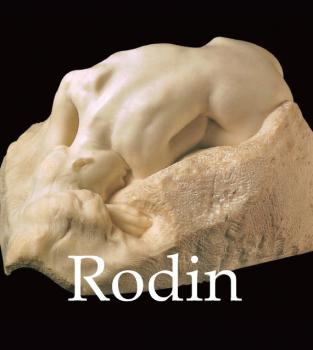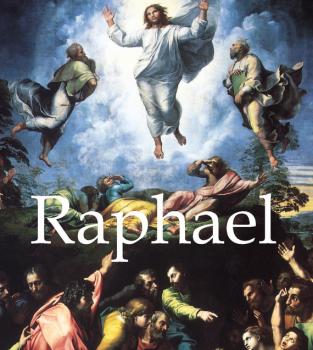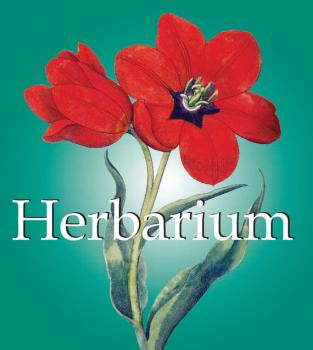ТОП просматриваемых книг сайта:
Иностранные языки
Различные книги в жанре Иностранные языки, доступные для чтения и скачиванияАннотация
Born in 1860 in a small Czech town, Alphonse Mucha (1860-1939) was an artist on the forefront of Art Nouveau, the modernist movement that swept Paris in the 1910s, marking a return to the simplicity of natural forms, and changing the world of art and design forever. In fact, Art Nouveau was known to insiders as the “Mucha style” for the legions of imitators who adapted the master’s celebrated tableaux. Today, his distinctive depictions of lithe young women in classical dress have become a pop cultural touchstone, inspiring album covers, comic books, and everything in between. Patrick Bade and Victoria Charles offer readers an inspiring survey of Mucha’s career, illustrated with over one hundred lustrous images, from early Parisian advertisements and posters for Sandra Bernhardt, to the famous historical murals painted just before his death, at the age of 78, in 1939.
Аннотация
An emblematic figure of the early 20th century, Paul Klee participated in the expansive Avant-Garde movements in Germany and Switzerland. From the vibrant Blaue Reiter movement to Surrealism at the end of the 1930s and throughout his teaching years at the Bauhaus, he attempted to capture the organic and harmonic nature of painting by alluding to other artistic mediums such as poetry, literature, and, above all, music. While he collaborated with artists like August Macke and Alexej von Jawlensky, his most famous partnership was with the abstract expressionist, Wassily Kandinsky.
Аннотация
Influenced by the masters of Antiquity, the genius of Michelangelo and Baroque sculpture, particularly of Bernini, Auguste Rodin (1840-1917) is one of the most renowned artists in history. Though Rodin is considered a founder of modern sculpture, he did not set out to critique past classical traditions. Many of his sculptures were criticised and considered controversial because of their sensuality or hyperrealist qualities. His most original works departed from traditional themes of mythology and allegory, and embraced the human body, celebrating individualism and physicality. This book uncovers the life and career of this highly acclaimed artist by exploring his most famous works of art, such as the Gates of Hell, The Thinker and the infamous The Kiss.
Аннотация
Raphael was the artist who most closely resembled Pheidias. The Greeks said that the latter invented nothing; rather, he carried every kind of art invented by his forerunners to such a pitch of perfection that he achieved pure and perfect harmony. Those words, “pure and perfect harmony,” express, in fact, better than any others what Raphael brought to Italian art. From Perugino, he gathered all the weak grace and gentility of the Umbrian School, he acquired strength and certainty in Florence, and he created a style based on the fusion of Leonardo's and Michelangelo's lessons under the light of his own noble spirit. His compositions on the traditional theme of the Virgin and Child seemed intensely novel to his contemporaries, and only their time-honoured glory prevents us now from perceiving their originality. He has an even more magnificent claim in the composition and realisation of those frescos with which, from 1509, he adorned the Stanze and the Loggia at the Vatican. The sublime, which Michelangelo attained by his ardour and passion, Raphael attained by the sovereign balance of intelligence and sensibility. One of his masterpieces, The School of Athens, was created by genius: the multiple detail, the portrait heads, the suppleness of gesture, the ease of composition, the life circulating everywhere within the light are his most admirable and identifiable traits.
Аннотация
For Claude Monet the designation ‘impressionist’ always remained a source of pride. In spite of all the things critics have written about his work, Monet continued to be a true impressionist to the end of his very long life. He was so by deep conviction, and for his Impressionism he may have sacrificed many other opportunities that his enormous talent held out to him. Monet did not paint classical compositions with figures, and he did not become a portraitist, although his professional training included those skills. He chose a single genre for himself, landscape painting, and in that he achieved a degree of perfection none of his contemporaries managed to attain. Yet the little boy began by drawing caricatures. Boudin advised Monet to stop doing caricatures and to take up landscapes instead. The sea, the sky, animals, people, and trees are beautiful in the exact state in which nature created them – surrounded by air and light. Indeed, it was Boudin who passed on to Monet his conviction of the importance of working in the open air, which Monet would in turn transmit to his impressionist friends. Monet did not want to enrol at the Ecole des Beaux-Arts. He chose to attend a private school, L’Académie Suisse, established by an ex-model on the Quai d’Orfèvres near the Pont Saint-Michel. One could draw and paint from a live model there for a modest fee. This was where Monet met the future impressionist Camille Pissarro. Later in Gleyre’s studio, Monet met Auguste Renoir Alfred Sisley, and Frédéric Bazille. Monet considered it very important that Boudin be introduced to his new friends. He also told his friends of another painter he had found in Normandy. This was the remarkable Dutchman Jongkind. His landscapes were saturated with colour, and their sincerity, at times even their naïveté, was combined with subtle observation of the Normandy shore’s variable nature. At this time Monet’s landscapes were not yet characterized by great richness of colour. Rather, they recalled the tonalities of paintings by the Barbizon artists, and Boudin’s seascapes. He composed a range of colour based on yellow-brown or blue-grey. At the Third Impressionist Exhibition in 1877 Monet presented a series of paintings for the first time: seven views of the Saint-Lazare train station. He selected them from among twelve he had painted at the station. This motif in Monet’s work is in line not only with Manet’s Chemin de fer (The Railway) and with his own landscapes featuring trains and stations at Argenteuil, but also with a trend that surfaced after the railways first began to appear. In 1883, Monet had bought a house in the village of Giverny, near the little town of Vernon. At Giverny, series painting became one of his chief working procedures. Meadows became his permanent workplace. When a journalist, who had come from Vétheuil to interview Monet, asked him where his studio was, the painter answered, “My studio! I’ve never had a studio, and I can’t see why one would lock oneself up in a room. To draw, yes – to paint, no”. Then, broadly gesturing towards the Seine, the hills, and the silhouette of the little town, he declared, “There’s my real studio.”Monet began to go to London in the last decade of the nineteenth century. He began all his London paintings working directly from nature, but completed many of them afterwards, at Giverny. The series formed an indivisible whole, and the painter had to work on all his canvases at one time. A friend of Monet’s, the writer Octave Mirbeau, wrote that he had accomplished a miracle. With the help of colours he had succeeded in recreating on the canvas something almost impossible to capture: he was reproducing sunlight, enriching it with an infinite number of reflections. Alone among the impressionists, Claude Monet took an almost scientific study of the possibilities of colour to its limits; it is unlikely that one could have gone any further in that direction.
Аннотация
Mega Square In Praise of the Backside celebrates the most sensual part of the female body. The insightful text by Hans-Jürgen Döpp discusses the backside as a feature that stands for both powerful eroticism and supple femininity, seducing famous artists from every genre. This title is sure to entice and delight a wide audience with its lively, provocative images.
Аннотация
Impressionism has always been one of the public’s favourite styles of art and Impressionist works continue to enchant beholders with their amazing play of colours and forms. This book offers a well-chosen selection of the most impressive works of artists such as Degas, Monet, Pissarro, Renoir and Sisley. Mega Square Impressionism pays tribute to the subject’s popularity.
Аннотация
Mega Square Herbarium is based on the work of Basilius Besler, the famous plant expert who, for the first time in history, described, painted and engraved over a thousand species of plants. His drawings are of great scientific as well as artistic value, and offer vivid insights into Europe’s eclectic flora.
Аннотация
Paul Gauguin was first a sailor, then a successful stockbroker in Paris. In 1874 he began to paint at weekends as a Sunday painter. Nine years later, after a stock-market crash, he felt confident of his ability to earn a living for his family by painting and he resigned his position and took up the painter’s brush full time. Following the lead of Cézanne, Gauguin painted still-lifes from the very beginning of his artistic career. He even owned a still-life by Cézanne, which is shown in Gauguin’s painting Portrait of Marie Lagadu. The year 1891 was crucial for Gauguin. In that year he left France for Tahiti, where he stayed till 1893. This stay in Tahiti determined his future life and career, for in 1895, after a sojourn in France, he returned there for good. In Tahiti, Gauguin discovered primitive art, with its flat forms and violent colours, belonging to an untamed nature. With absolute sincerity, he transferred them onto his canvas. His paintings from then on reflected this style: a radical simplification of drawing; brilliant, pure, bright colours; an ornamental type composition; and a deliberate flatness of planes. Gauguin termed this style “synthetic symbolism”.
Аннотация
Painter, designer, creator of bizarre objects, author and film maker, Dalí became the most famous of the Surrealists. Buñuel, Lorca, Picasso and Breton all had a great influence on his career. Dalí's film, An Andalusian Dog, produced with Buñuel, marked his official entry into the tightly-knit group of Parisian Surrealists, where he met Gala, the woman who became his lifelong companion and his source of inspiration. But his relationship soon deteriorated until his final rift with André Breton in 1939. Nevertheless Dalí's art remained surrealist in its philosophy and expression and a prime example of his freshness, humour and exploration of the subconscious mind. Throughout his life, Dalí was a genius at self-promotion, creating and maintaining his reputation as a mythical figure.










